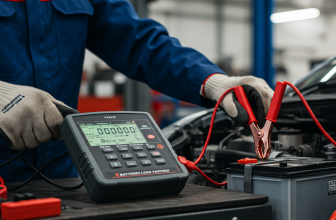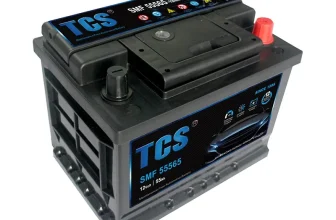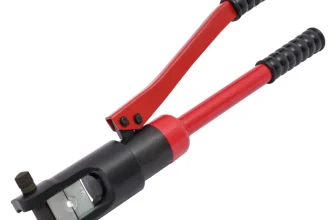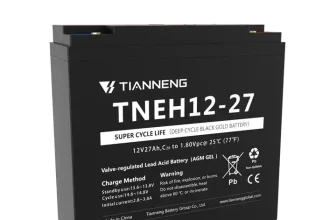There are many things to take into account when talking about forklift batteries and forklift battery charging.
We will go over the main things you should be aware of when selecting a forklift battery charging method since that is an important choice for your forklift fleet.
The method used to charge your forklift batteries is one of the, if not the most important factor in getting the maximum lifespan from them.
When to Charge Forklift Batteries
One of the most important things take into consideration when charging forklift batteries is at what battery level to recharge.
This is important, especially for lead acid forklift batteries, since there are a lot of negative effects to these types of forklift batteries when they are discharged beyond a certain levels.
The target zone for recharging a lead acid forklift battery is between 30 and 50%.
If a lead acid forklift battery is discharged beyond this level there are some significant negative effects.
Lithium ion forklift batteries can be safely discharged down to 20% without negative side effects.
Excessive Discharge in Lead Acid Batteries
There are several negative effects that happen in lead acid forklift batteries when they are discharged below 20% capacity.
The primary negative effect of deep discharge on lead acid forklift batteries is the build up of sulfation deposits inside the battery.
Lead acid batteries contain an acid called sulfuric acid that is part of them chemical reaction that enables lead acid forklift batteries to produce electric current.
When a lead acid battery is discharged excessively these sulfation deposits attache to the plates inside the battery.
Once these deposits attach to the battery plates it decreases the exposed plate area that can be used to generate electric current.
This causes lead acid battery to become weaker as more plate area is covered.
Always Charge Lead Acid Batteries to 100%
A lead acid forklift battery has a life of around 1,000 – 1,500 charge cycles in general.
One very important thing to keep in mind is that even a half charge will take a cycle away from the life of a lead acid forklift battery.
To make sure you are getting the most out of your lead acid forklift batteries make sure to always fully charge them once they are depleted.
Forklift Battery Charging Methods
Forklift batteries are large and have a high capacity.
There are several different types for forklift battery chargers and charging methods depending on the particular situation.
We will take a look at the top three types of forklift battery charging methods used and their advantages and disadvantage with the most common types of forklift batteries.
Conventional Charging
The first forklift battery charging method we will go over is what is called conventional charging.
When using conventional charging the batteries are charged slowly using a relatively low current.
It will take around 6-8 hours to fully charge a lead acid forklift battery when using conventional charging, so it is a pretty slow process.
Lithium ion forklift batteries can charge much faster than their lead acid counterparts.
They are be fully charged in a little as 1 -2 hours compared to a lead acid batteries 8 hours.
That is a huge time savings win for lithium ion batteries.
The conventional charging method is the best one for the batteries because they are charged as a slower rate and less often.
This means your forklift batteries will last the longest when using this method.
Lead Acid Batteries Need Dedicated Charging Area
If you are using lead acid forklift batteries you should be aware these types of batteries must be removed from the forklift when being charged.
This means you will need a dedicate space to store lead acid batteries while charging.
Also, lead acid batteries produce quite a bit of heat when charging, so it is best to have some method to keep the battery charging area cool.
Lead Acid Batteries Need to Cool Down
Even once the charging is done lead acid batteries still need to go through a cooling period before they can be used.
This cooling period is around 6 hours or even more in some cases.
You will need to take this cool down period into account if you will be charging lead acid forklift batteries, especially if you are running multiple shifts and swapping multiple batteries.
Lithium ion forklift batteries do not require a cool down period after charging.
That is a huge advantage for lithium ion batteries.
Lithium Ion Batteries Stay in the Forklift
When using lithium ion batteries in forklifts the batteries can be charged while staying in the forklift.
This means you will not need a dedicated area to charge lithium ion forklift batteries.
Lithium ion forklift batteries are also tolerate heat better, so they do not need to be kept in a cool climate when charging.
Forklift Downtime
Because of the long charging and cool down times the conventional method of charging forklift batteries is not well suited for multi-shift operations unless multiple batteries are swapped in and out.
With multiple batteries some batteries can be charging and cooling while another is in use.
While this does greatly reduce forklift downtime due to battery charging and cool down it does present other issues.
Forklift batteries are large, heavy, and expensive, so having multiple batteries adds quite a bit to the cost to operating battery powered forklifts.
In additional to the expense of the extra batteries you also need somewhere to store them and a way to lift and move them around.
Then you will have to swap batteries in and out of the forklifts, which can be dangerous and time consuming.
Battery Cell Balancing
If you have lead acid forklift batteries one thing to keep in mind is that lead acid batteries require their cells to be balanced around every 10 charges to maintain maximum performance and ensure the longest possible usable battery lift.
When selecting a forklift battery charger for lead acid forklift batteries you should look for a model that has a cell auto-balancing feature.
Getting a forklift battery charger with an auto-balancing feature will do the cell balancing automatically, so you will never have to worry about remembering to do this.
Lithium ion forklift batteries do not require cell balance as they auto-balance themselves automatically.
Opportunity Charging
Another method of charging forklift batteries is called opportunity charging using forklift battery chargers designed specifically for this type of charging.
When using opportunity charging a forklift’s battery is partially charged at multiple times throughout a shift when the opportunity arises.
This is where the name opportunity charging comes from.
Basically these times would include times when the forklift is not being used for a short time, such as during breaks, lunchtime, or something like that.
Opportunity charging forklift batteries uses a higher charging rate than the standard conventional charging method.
Extending Runtime Between Full Recharges
This method willallow battery powered forkliftsto operate longer between full battery charges.
If forklift runtime is not quite enough to make it through a shift, or it is cutting it really close, opportunity charging can help get that little extra runtime needed before a full recharge can be done.
Shorter Battery Life
Compared to conventional charging opportunity charging does shorten the battery life for lead acid forklift batteries.
A forklift battery, just like any other rechargeable battery, only has so many charging cycles before it wears out.
These extra cycles and the fact that the battery is charged at a faster rate during opportunity charging are the main factors that cause this charging method to shorten the life of forklift batteries.
The faster rate of opportunity charging also creates more heat since more current is being used to charge the forklift battery.
Lithium Ion Batteries Less Affected
The extra cycles that opportunity charging subjects forklift batteries to does still affect lithium ion batteries, but they are much less affected than their lead acid counterparts.
Some forklift battery manufacturers even say there is no additional negative effect to opportunity charging their lithium ion batteries.
So if you plan to use opportunity charging it is best used with lithium ion forklift batteries.
Fast Charging
As the name implies, fast charging is the fastest of all the charging methods we are discussing here.
Fast charging a lead acid battery will significantly reduce its usable lifespan.
For example, a standard forklift lead acid battery will last around 5 years when only conventional charging is use.
If the same battery is fast charged it will reduce the lifespan by around 2 years, so that same lead acid forklift battery would only last 3 years when fast charging is used.
In contrast to opportunity charging, which is already using a faster charge rate than conventional charging, fast charging uses an even faster rate of charge.
Same Downsides as Opportunity Charging
Since fast charging uses a faster charging rate than opportunity charging it has the same disadvantages as opportunity charging.
These disadvantages are event more pronounced with fast charging.
Final Thoughts
As you can see, the charging method used to charge forklift batteries has a huge effect on the lifespan of those batteries.
Forklift batteries have a certain number of charge cycles in their lifespan, so the more times you charge them the less charge cycles the battery has left.
One of the main things to keep in mind is that the faster you charge a forklift battery the less lifespan it will have.
Charging a forklift battery faster actually reduces the number of cycles that same forklift battery will provide over its lifespan.
If a faster forklift battery charging method seems appealing just make sure to keep in mind you will be trading battery life for the time saved charging.
Be sure to do a cost calculation taking into account the reduced battery lifespan when making a decision what forklift battery charging method to use.







